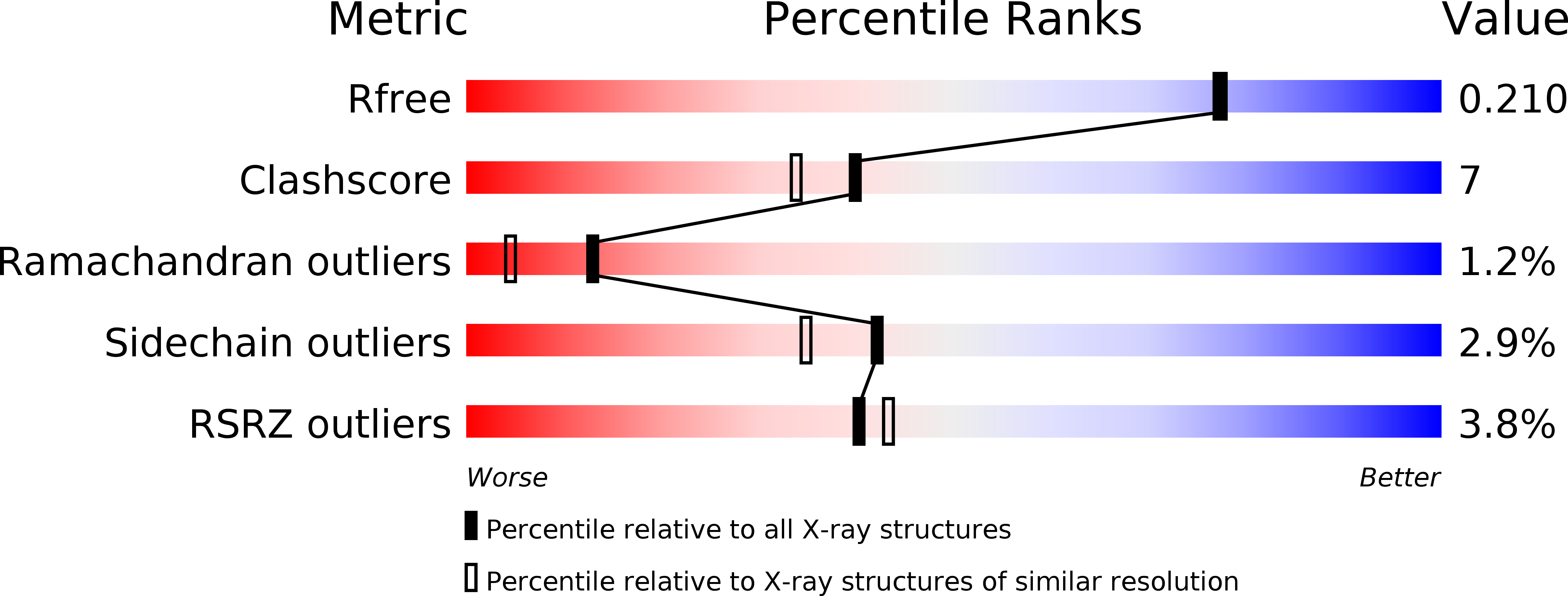Crystal structure of the receptor-binding domain of alpha 2-macroglobulin.
Jenner, L., Husted, L., Thirup, S., Sottrup-Jensen, L., Nyborg, J.(1998) Structure 6: 595-604
- PubMed: 9634697
- DOI: https://doi.org/10.1016/s0969-2126(98)00061-6
- Primary Citation of Related Structures:
1AYO - PubMed Abstract:
The large plasma proteinase inhibitors of the alpha 2-macroglobulin superfamily inhibit proteinases by capturing them within a central cavity of the inhibitor molecule. After reaction with the proteinase, the alpha-macroglobulin-proteinase complex binds to the alpha-macroglobulin receptor, present in the liver and other tissues, and becomes endocytosed and rapidly removed from the circulation. The complex binds to the receptor via recognition sites located on a separate domain of approximately 138 residues positioned at the C terminus of the alpha-macroglobulin subunit. The crystal structure of the receptor-binding domain of bovine alpha 2-macroglobulin (bRBD) has been determined at a resolution of 1.9 A. The domain primarily comprises a nine-strand beta structure with a jelly-roll topology, but also contains two small alpha helices. The surface patch responsible for receptor recognition is thought to involve residues located on one of the two alpha helices of the bRBD as well as residues in two of the beta strands. Located on this alpha helix are two lysine residues that are important for receptor binding. The structure of bRBD is very similar to the approximately 100-residue C-terminal domain of factor XIII, a transglutaminase from the blood coagulation system.
Organizational Affiliation:
Department of Molecular and Structural Biology, University of Aarhus, Denmark.
















